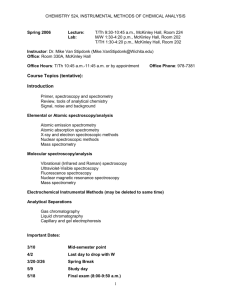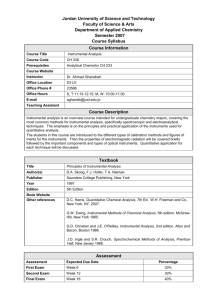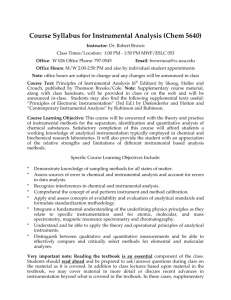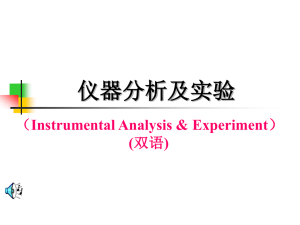METODOS INSTRUMENTALES
advertisement
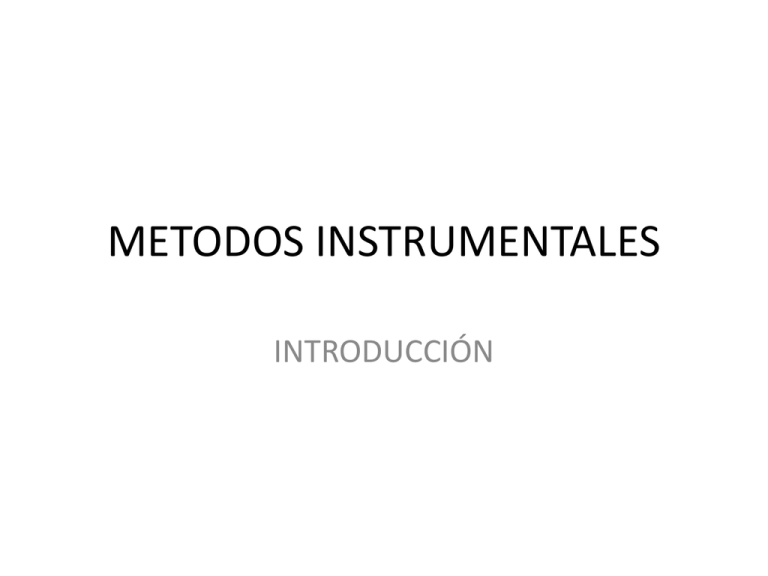
METODOS INSTRUMENTALES INTRODUCCIÓN Classification of Analytical Methods • Qualitative instrumental analysis is that measured property – indicates presence of analyte in matrix • Quantitative instrumental analysis is that magnitude of measured – property is proportional to concentration of analyte in matrix Classical • Qualitative - identification by color, indicators, boiling points, • odors • Quantitative - mass or volume (e.g. gravimetric, volumetric) Instrumental • Qualitative - chromatography, electrophoresis and identification by measuring physical property (e.g. spectroscopy, electrode potential) • Quantitative - measuring property and determining relationship to concentration (e.g. spectrophotometry, mass spectrometry) • Often, same instrumental method used for qualitative and quantitative analysis Types of Instrumental Methods • Property Example Method Radiation emission Emission spectroscopy - fluorescence, phosphorescence, luminescence Radiation absorption Absorption spectroscopy spectrophotometry, photometry, nuclear magnetic resonance, electron spin resonance • Radiation scattering Turbidity, Raman • Radiation refraction Refractometry, interferometry • Radiation diffraction X-ray, electron • • • • • • • • • • Radiation rotation Electrical potential Electrical charge Electrical current polarography Electrical resistance Mass Gravimetry Mass-to-charge ratio Rate of reaction Thermal Radioactivity Polarimetry, circular dichroism Potentiometry Coulometry Voltammetry - amperometry, Conductometry Mass spectrometry Stopped flow, flow injection analysis Thermal gravimetry, calorimetry Activation, isotope dilution DATA • Time - vary with time (frequency, phase, pulse width) • Analog - continuously variable magnitude (current, voltage, charge) • Digital - discrete values (count, serial, parallel, number*) Performance Characteristics • • • • • • How to choose an analytical method? How good is measurement? How reproducible? - Precision How close to true value? - Accuracy/Bias How small a difference can be measured? Sensitivity What range of amounts? - Dynamic Range How much interference? - Selectivity





